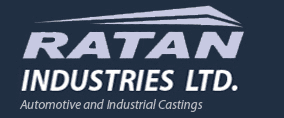There are many factors to consider when selecting an anaerobic digestion system. For example, how sustainable is the process? Does the system require the pretreatment of waste before it can be used? Is the equipment free of undesirable materials? And, is the system suitable for spreading on land?
Depending on the location of your home, you might have to purchase an STP to handle your sewage. Generally, residential buildings need at least one STP to treat sewage. Many STPs are located underground, making them difficult to maintain. Moreover, you may not be able to inspect them without hiring an expert. It is better to consult a professional if you have any doubts about the process.
Sustainable AD
When selecting AD equipment, it is important to consider the environment, performance, safety features, and operator comfort. There are also environmental, social, and health concerns that need to be taken into account. Fortunately, there are many sustainability criteria that can help guide the selection process. Some of these criteria are ranked based on their importance.
The first step of the methodology is to evaluate the feasibility of various equipment types. The decision maker should consider the biomass processing process and whether the equipment is suitable for that process.
Co-digestion
If you're considering anaerobic digestion for your wastewater treatment project, you should know that many different types of technology are available. It would be best to consider how you'll use the technology to meet your needs and the cost of construction and maintenance. Some technologies require pretreatment before they can be used, adding considerable capital cost.
Anaerobic digestion equipment selection must be based on the feed material you plan to treat. For instance, if treating moderately charged waste, you'll probably want to select an anaerobic contact process system. This is a more straightforward process and can be the system of choice in many cases. It's also less expensive to invest in and will allow you to treat waste for more extended periods. This will reduce the need for more expensive, energy-intensive equipment and may be especially useful in areas where energy is a scarce resource.
Equipment free of undesirable materials

Anaerobic digestion is a process whereby organic waste is digested and converted into biogas. This gas can be used to produce electricity or heat. Anaerobic digesters are also referred to as fermenters and bio-digesters. Anaerobic digestion is a suitable method for reducing emissions from farmland. However, the process can result in the creation of other waste materials.

The process can reduce solid organic matter content by up to 50%. It also produces a stable, non-odorous digestate that is beneficial to soil properties and stimulates biological activities. However, anaerobic digestion has some disadvantages as a fertiliser. The pH level increases during the process, and the nitrogen in the feedstock break down to free ammonia (NH3), which changes the fertiliser value of the waste.
Suitability for spreading on land
Anaerobic digestion equipment can be spread onto land to provide a sustainable and organic fertiliser. Anaerobic digestion equipment is regulated to ensure safety and quality. It can be used as a fertiliser, biofuel, or soil improver. In some countries, anaerobic digestates can be recycled into compost. The process for using the digestate is relatively straightforward, but environmental groups are concerned about the potential impact of land application in phosphate and nitrate-sensitive zones.
The British Standards Institution publishes a standard for the quality of anaerobic digestates. In the UK, this standard is known as Publicly Available Specification 110:2010. Germany's Reichs-Ausschuss fur Lieferbedingungen (RZ245) also publishes a standard. In France, the standard for the quality of anaerobic digestate is NFU44-051.
Cost
The cost of anaerobic digestion equipment can vary depending on the size of the unit and the amount of feedstock it processes. The price of a commercial unit can run anywhere from $400,000 to $5 million. Smaller backyard units can cost as little as $200 to several thousand dollars.
In Europe, several plants are already using partial stream digestion to reduce the feedstock they need to dispose of. One such facility, the Organic Waste Systems facility in Hengelo, Netherlands, has designed and built a continuous plug-flow anaerobic digestion system integrated into a more extensive composting operation. The system can process up to 12,000 tons of pre-consumer waste and 48,500 tons of biowaste yearly. Anaerobic digestion adds significant capacity while taking up less space than composting.
Anaerobic digestion can be either a continuous or batch process. In the case of batch processing, biomass is added to the reactor at the start of the process, and the tank is sealed. The resulting biogas will usually form with a regular distribution pattern over time. This characteristic helps determine when the process has ended. However, opening the batch reactor may result in odour problems.






































